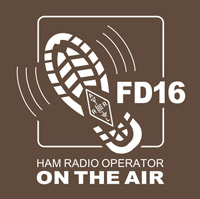 |
Click on the dates to the right to see highlights and pictures of MARC Field Day events from previous years. Thank you Charlie WA5WUX for sharing these historical pictures.
FIELD DAY 2016 |
Field Day is an annual amateur radio exercise, widely sponsored by IARU (International Amateur Radio Union) regions and member organizations, encouraging emergency communications preparedness among amateur radio operators. In the United States, it is the largest single emergency preparedness exercise in the country, with over 30,000 operators participating each year.
Since the first ARRL Field Day in 1933, radio amateurs throughout North America have practiced the rapid deployment of radio communications equipment in environments ranging from operations under tents in remote areas to operations inside Emergency Operations Centers (EOCs). Operations using emergency and alternative power sources are highly encouraged, since electricity and other public infrastructures are often among the first to fail during a natural disaster or severe weather.
To determine the effectiveness of the exercise and of each participant's operations, there is an integrated contesting component, and many clubs also engage in concurrent leisure activities (camping out, cookouts, etc.). Operations typically last a continuous twenty-four hours, requiring scheduled relief operators to keep stations on the air. Additional contest points are awarded for experimenting with unusual modes, making contacts via satellite, and involving youth in the activity.
The contest aspect of a Field Day operating event is to contact as many stations as possible in the given time period (twenty-four hours, during a weekend, if setup commences before the contest starts, or 27 hours if setup commences at contest start time) using the portable station. Each station will exchange information with other participating stations. For the North American Field Day, the exchange consists of the station call sign, the name of the ARRL-recognized section from which the station is operating, and a class designator which indicates the number of transmitters concurrently used at the station and information about the type of electrical power source being used.
The contest portion of Field Day has two purposes. The primary purpose is to demonstrate the group's ability to plan operations that can be effective for an entire twenty-four-hour period, including operator endurance and adequate numbers of operators for a shift operation. The secondary portion is to demonstrate the technical proficiency of the station that has been hastily constructed for the purpose; in theory a better station will be capable of emergency operations in more dire conditions. Such a station will also be capable of making more contacts during the contest portion of Field Day.
|
INDEX
1965
1970
1973
1975
1976
1980
1999
2000
2001
2002
2003
2004
2005
2006
2007
2008
2009
2010
2011
2012
2015
2016
2023 |